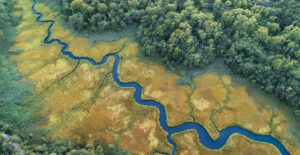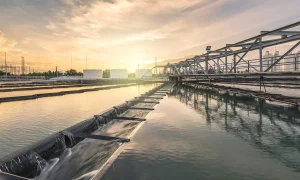Stockholm Water Front No 2-3 2017
The full realization is sinking in. Many large-scale water users - not only the water users on the front line such as farmers - but also companies dependent on water (most, that is), cities and nations now see that there really is no way around the water challenge.

The only way to deal with it is head on. All planning – public as well as private – must take increased water scarcity into consideration. Water must be reused at all opportunities. In parallel, us citizens as well as companies and institutions, must make an effort to reduce our water use.
We have dedicated a large part of this issue of WaterFront to reuse of water.
In Keeping Scarcity at Bay – Global Tales of Water Reuse, by Tom Freyberg, we have looked at how some of the pioneers in the area, countries like Namibia, Singapore and Israel, have managed to cope with scarcity, increase reuse, and even change public perceptions.
In South Africa, Cape Town has suffered the worst drought in recent history, and is learning to live with water shortage as the new normal. How do they plan for the city to thrive under altered circumstances? Read Cape Town Treats Drought as New Normal, by Görrel Espelund.
How is California adapting to a future with less available fresh water? Read Adapting to the Weather – California Forced to Learn Fast, by Christina Anderson.
We also have an inspiring story on the Great Green Wall – Africa Trades in The Great Green Wall for a Magical Mosaic Carpet, by Bill Hinchberger.
Malin Falkenmark argues for water decoupling in Blue for Cities and Green for Agriculture – Towards water Decoupling.
Lastly, we remind ourselves to not forget the end goal of establishing a water wise world while swimming through the sea of SDG targets and indicators. Read Eyes on the Ball – How to Navigate the Sea of SDG Indicators, by Marianne Kjellén and Birgitta Liss Lymer.
Enjoy the read!



